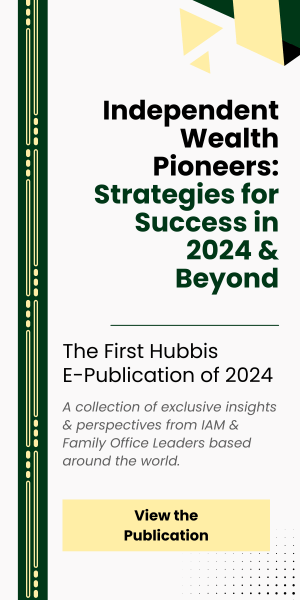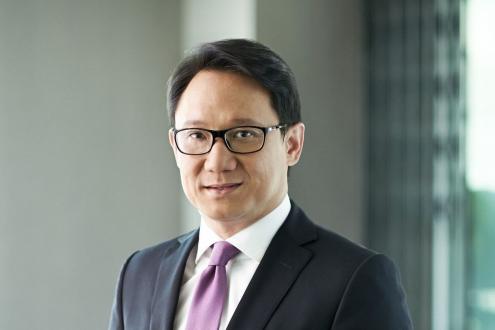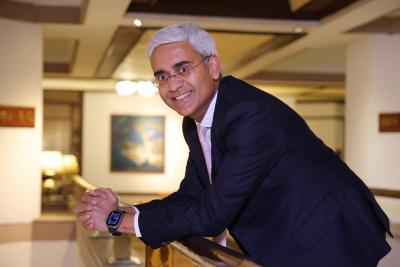Maybank’s Group Head of Wealth Management on the Bank’s Model and Market Positioning
Alvin Lee is the Head of Group Wealth Management & Community Financial Services Singapore at Maybank, and was one of our expert panellists speaking at the Hubbis April 7 Webinar on the evolution of private banking in the region and the role of technology in helping achieve key goals. Hubbis caught up with him and Alvin provided insights into the current state of the wealth management market in the region. He also shared the countries the bank covers, his views on key changes and key priorities, and how he is defining Maybank Private’s USP as well as its digital journey plans for the years ahead. Lee has presided over the evolution of the Maybank’s private banking model, which is now in its eighth year.
A very big presence in ASEAN
Malaysia’s Malayan Banking Berhad, or Maybank, is the country’s most valuable bank brand with a market capitalisation of over USD22.5 billion and total assets in excess of USD213 billion as at the end of 2020. It is also one of Asia’s largest banks, with a footprint in all 10 ASEAN countries and a worldwide network of 2,600 offices with over 42,000 employees.
The bank was founded in 1960 in Kuala Lumpur and has maintained a presence in Singapore since that year. It was in October 2018 that the Monetary Authority of Singapore (MAS) granted approval for Maybank Singapore Limited (MSL), Maybank’s wholly owned subsidiary in Singapore, which has a full banking licence with Qualifying Full Bank privileges, to incorporate its Community Financial Services (CFS) business in the island state. MSL’s CFS encompasses its retail, private wealth, SME and commercial banking divisions.
Driving the private banking model
As Head of Group Wealth Management and Community Financial Services Singapore at Maybank for some eight years already, and also leading the Singapore operations since 2018, Lee has been driving the bank forward in terms of the expansion of its wealth management services in the region. Hubbis has enjoyed regular communication with him since he took on this particular role and he has always stressed how he and the bank see the development of its wealth business as a multi-year initiative; the business, he reiterates, will be given time to build up its model and franchise, so that it will be well-positioned to ride the upturns and downturns.
In his role at Maybank and past employments in London and Middle East, he has seen first-hand how the region has grown and developed demographically and economically, which of course have together spurred private wealth growth and increased demand for wealth management services.
Multi-client focus
The bank focuses on the UHNW and HNW segments, and given the DNA of the bank and the typical customer base that it already has, Lee has also been focusing the emerging-affluent and mass-affluent segments, which he believes will be a key to the success of its wealth business.
In an extremely competitive industry, he has also stuck to his firm belief that the bank’s product offerings and business model must be broadly supported by and delivered by technology, which although it is not necessarily a differentiator, the lack of smart solutions is a major deterrent to customers.
Hubbis: Maybank’s private banking business opened its doors in 2013, since when you have been building an exciting operation at home and also regionally. What are the key changes you have seen and had to adapt to since the pandemic hit in early 2020?
Lee: With Maybank Wealth Management’s regional presence, we do see a lot of clients being very open to relocating, so for example Indonesian clients moving their whole family to Singapore. And we see more Mainland Chinese clients choosing Singapore over Hong Kong. These changes do create opportunities for us in our Singapore operation.
The key changes we saw when the pandemic hit was the amount of handholding that we needed to offer our clients to help them navigate the crisis and the market fallout, while operationally there were immense hurdles for us to overcome internally. I thought the ability of the customers and the population at large to adapt to the new norm was quite phenomenal. Clients and our teams alike were very amenable to embrace new ways of doing business, whether digital or otherwise.
All in all, it was a positive year for us, and I see 2021 being pretty much the same as last year in terms of the market opportunity. I think the markets will continue to stay conducive to stay invested, especially with such low interest rates. I personally do not think there is a risk of the inflationary factor some have talked about, so I do not see interest rates going much higher. This is helped by the fact that there is still ample liquidity. I think the market will remain good, and this is good for our industry.
Hubbis: And in terms of technology and digitisation, Maybank is coming up eight years old as a private bank, so on this journey, what have you focused on in terms of upgrading and enhancing various aspects of your proposition and delivery, and what are your priorities?
Lee: I should first offer my insights into the private banking models and where we fit in. We are not one of the global banks like the huge Swiss brands, or boutique international private banks. We are in the category of the regional private bank, for example, the Singapore banks which have a private bank as part of the overall commercial banking proposition.
I say this because it means we must position ourselves to play to our strengths, that is really critical. We cannot and must not pretend to be what we cannot be. For us, it is very clear that we would firstly target all the existing customers in our corporate banking and business banking customer base.
And the solutions we provide should not just be conventional wealth management solutions, because those can be obtained from any other player, the key for us is how we embed wealth management within the clients’ business banking needs, and hopefully become a one-stop shop for our clients. This is the model we have adopted and we will stay true to this.
Hiring the right talent is really important. It helps to recruit relationship managers with the right skill sets and some corporate banking experience. It does not mean that all our private bankers need to have that, but if we have enough accumulative experience in corporate banking, it would be possible for us to offer that knowledge to our clients. And obviously, private banking is about products and solutions, and that oftentimes is dependent on the systems they have.
At Maybank Private, we have been using Avaloq for a few years now, which I think is a very good system, and it also has a web-based module that we will eventually roll out.
Taking one step back to understand what customers want from private banks, at least through the digital solutions, I think there are three key elements. First, they want to be able to view their portfolios. Second, they want to be able to receive advice, whether passive or active. Thirdly, and I think this is the most difficult element to implement for most of us; they want to be able to seamlessly and easily transact online.
To help achieve these goals at Maybank Private, we actually have started allowing digital signatures for new customers at the onboarding phase. In addition, I am lucky in the sense that Maybank Group has presence in all 10 ASEAN countries, so we can also coordinate quite easily amongst our teams, offering more webinars and using more of the remote channels to reach our customers. My bet is that once we are allowed to travel, we will probably continue to adopt some of these digital capabilities, but I also believe that private banking cannot work well without meeting our customers face to face, to get that personal relationship and rapport.
Hubbis: What types of clients have what types of needs and expectations?
Lee: To me, I think broadly, there are two types of customers. One group is the fairly traditional wealth management type. For them, the ability to generate returns on the portfolio is critical. Having a close and long relationship with an RM is a very important element for this group of private banking clients who look at long-term value and stability. The second group is the much wealthier clients with more complex needs and they have a lot of connectivity between their wealth management and their business banking needs. That is where our private banking is so intricately integrated and well-woven into our commercial banking operations.
In short, we have the ability to connect the dots, not just across countries, but also across different business units of the Maybank Group under a universal banking model.

More from Alvin Lee, Maybank
Latest Articles







